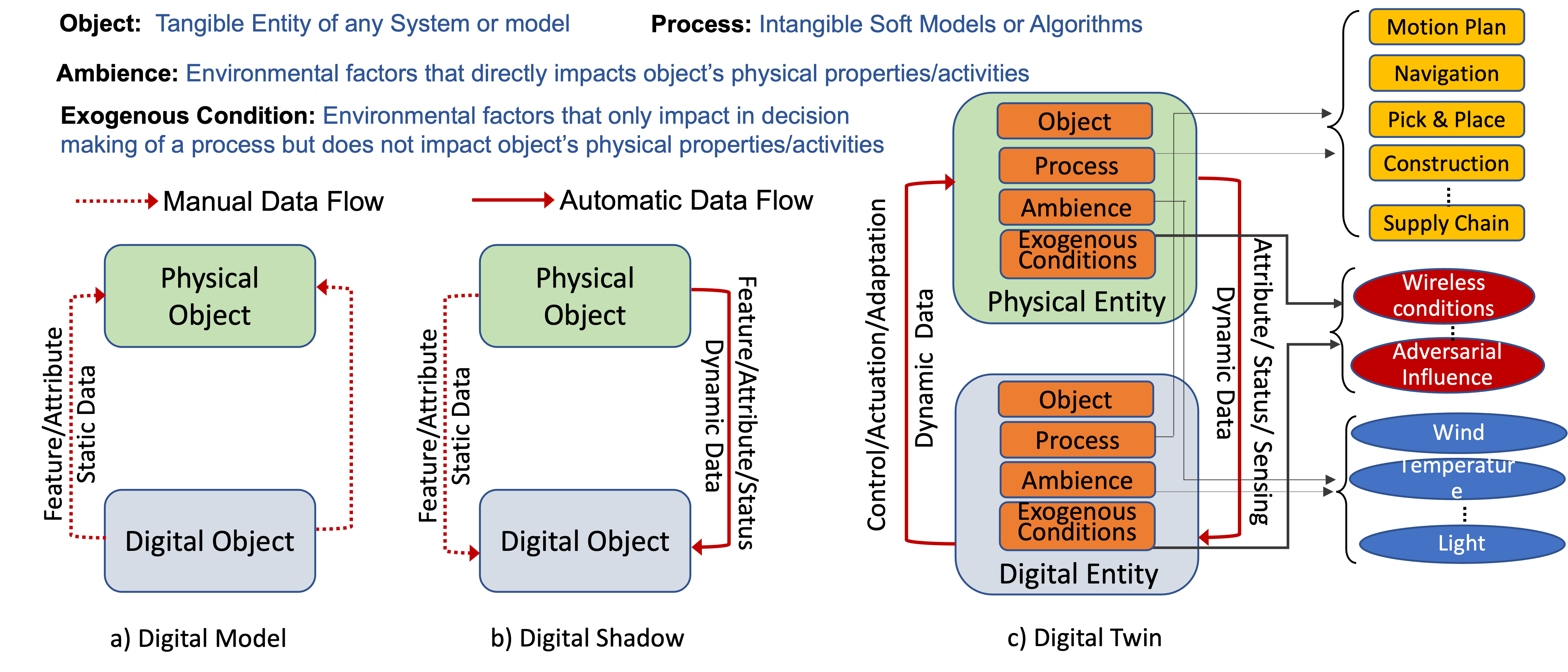Digital Twin technology is being envisioned to be an integral part of the industrial evolution in modern generation. With the rapid advancement in the Internet-of-Things (IoT) technology and increasing trend of automation, integration between the virtual and the physical world is now realizable to produce practical digital twins. However, the existing definitions of digital twin is incomplete and sometimes ambiguous. Herein, we conduct historical review and analyze the modern generic view of digital twin to create its new extended definition. We also review and discuss the existing work in digital twin in safety-critical robotics applications. Especially, the usage of digital twin in industrial applications necessitates autonomous and remote operations due to environmental challenges. However, the uncertainties in the environment may need close monitoring and quick adaptation of the robots which need to be safety-proof and cost effective. We demonstrate a case study on developing a framework for safety-critical robotic arm applications and present the system performance to show its advantages, and discuss the challenges and scopes ahead.
翻译:数字双胞胎技术被设想为现代产业演变的一个组成部分,随着互联网技术的迅速发展以及自动化趋势的不断提高,虚拟世界和物理世界的一体化现在可以实现,产生实用的数字双胞胎,然而,数字双星的现有定义尚不完整,有时是模糊不清的。在这里,我们进行历史审查和分析数字双胞胎的现代通用观点,以创建其新的扩展定义。我们还审查和讨论在安全关键机器人应用中数字双胞胎的现有工作。特别是,由于环境挑战,在工业应用中使用数字双胞胎需要自主和远程操作。然而,环境中的不确定性可能需要密切监测和迅速调整机器人,这需要安全和成本效益。我们展示关于制定安全关键机器人手臂应用框架的案例研究,介绍系统绩效以展示其优势,并讨论未来的挑战和范围。












